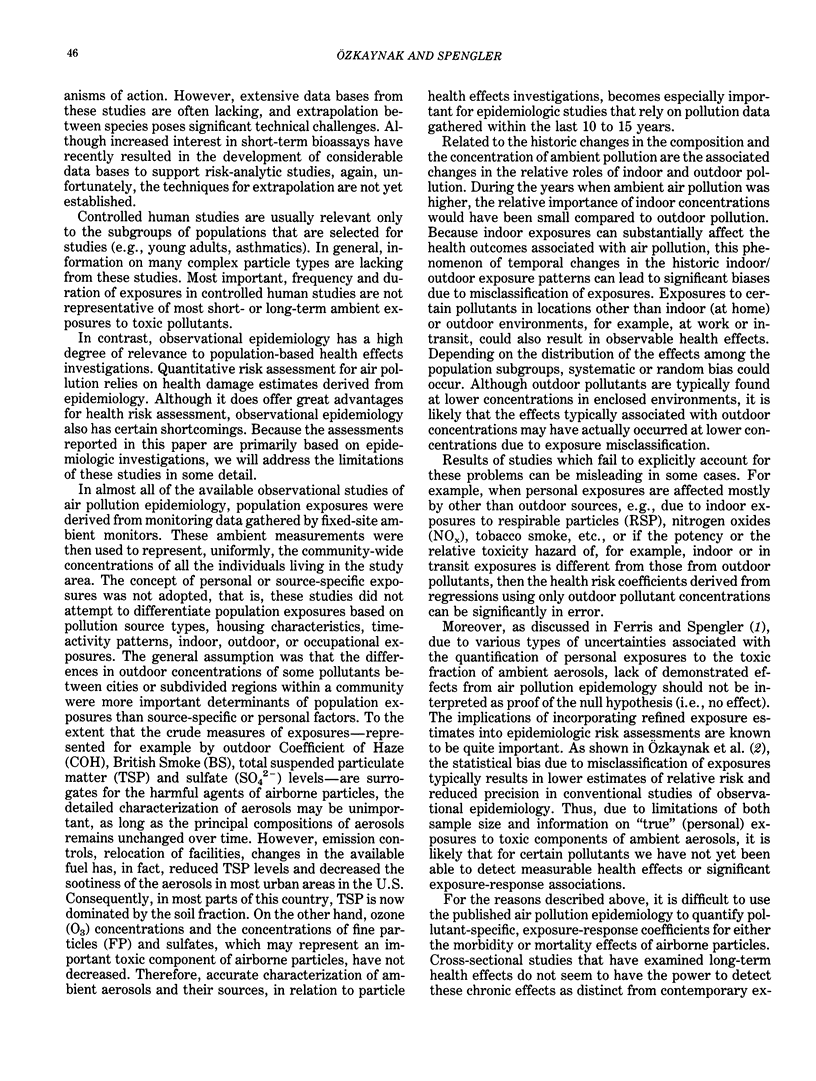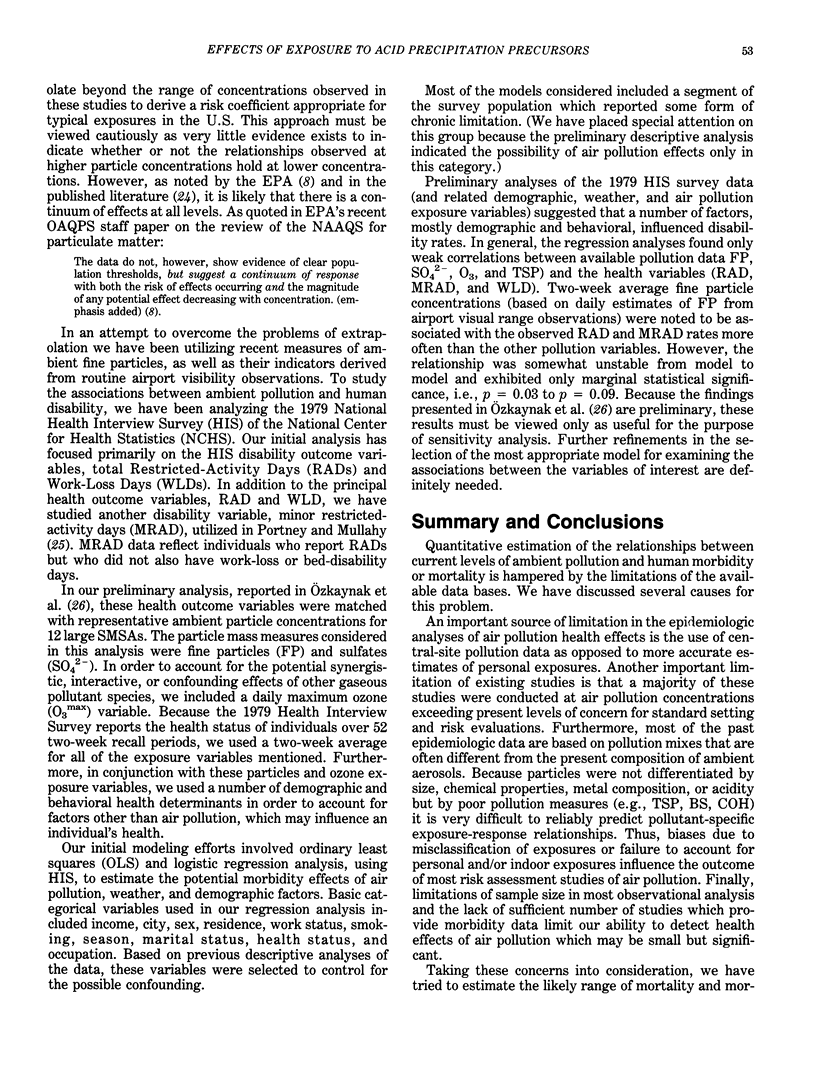Abstract
Types of available studies relevant to the quantification of air pollution health effects and their principal limitations are discussed. Assessments are provided based on review and re-analysis of previously reported data bases, synthesis of published findings, and original analysis of health data sets using new methods or recent size-specific particle mass measurements. Interim results from ongoing research activities on airborne particle health effects are presented. It is shown that preliminary results obtained from cross-sectional and time-series mortality studies appear to be consistent, indicating that particulate air pollution, even at current levels, could be of concern for public health. Throughout the paper, methodological deficiencies and remaining gaps in knowledge are identified. In particular, uncertainties associated with the reported exposure-response coefficients are assessed. Finally, by characterizing the limitations of analysis we propose various recommendations for future studies and research that will serve to further define the nature, magnitude, and uncertainties of air pollution health risks.
Full text
PDF










Selected References
These references are in PubMed. This may not be the complete list of references from this article.
- Ferris B. G., Chen H., Puleo S., Murphy R. L. Chronic nonspecific respiratory disease in Berlin, New Hampshire, 1967 to 1973. A further follow-up study. Am Rev Respir Dis. 1976 Apr;113(4):475–485. doi: 10.1164/arrd.1976.113.4.475. [DOI] [PubMed] [Google Scholar]
- Ferris B. G., Jr, Higgins I. T., Higgins M. W., Peters J. M. Chronic nonspecific respiratory disease in Berlin, New Hampshire, 1961 to 1967. A follow-up study. Am Rev Respir Dis. 1973 Jan;107(1):110–122. doi: 10.1164/arrd.1973.107.1.110. [DOI] [PubMed] [Google Scholar]
- Ferris B. G., Jr, Spengler J. D. Problems in the estimation of human exposure to components of acid precipitation precursors. Environ Health Perspect. 1985 Nov;63:5–9. doi: 10.1289/ehp.85635. [DOI] [PMC free article] [PubMed] [Google Scholar]
- Lipfert F. W. Air pollution and mortality: specification searches using SMSA-based data. J Environ Econ Manage. 1984 Sep;11(3):208–243. doi: 10.1016/0095-0696(84)90019-6. [DOI] [PubMed] [Google Scholar]
- Mazumdar S., Sussman N. Relationships of air pollution to health: results from the Pittsburgh study. Arch Environ Health. 1983 Jan-Feb;38(1):17–24. doi: 10.1080/00039896.1983.10543974. [DOI] [PubMed] [Google Scholar]
- Sarić M., Fugas M., Hrustić O. Effects of urban air pollution on school-age children. Arch Environ Health. 1981 May-Jun;36(3):101–108. [PubMed] [Google Scholar]
- Ware J. H., Thibodeau L. A., Speizer F. E., Colome S., Ferris B. G., Jr Assessment of the health effects of atmospheric sulfur oxides and particulate matter: evidence from observational studies. Environ Health Perspect. 1981 Oct;41:255–276. doi: 10.1289/ehp.8141255. [DOI] [PMC free article] [PubMed] [Google Scholar]


